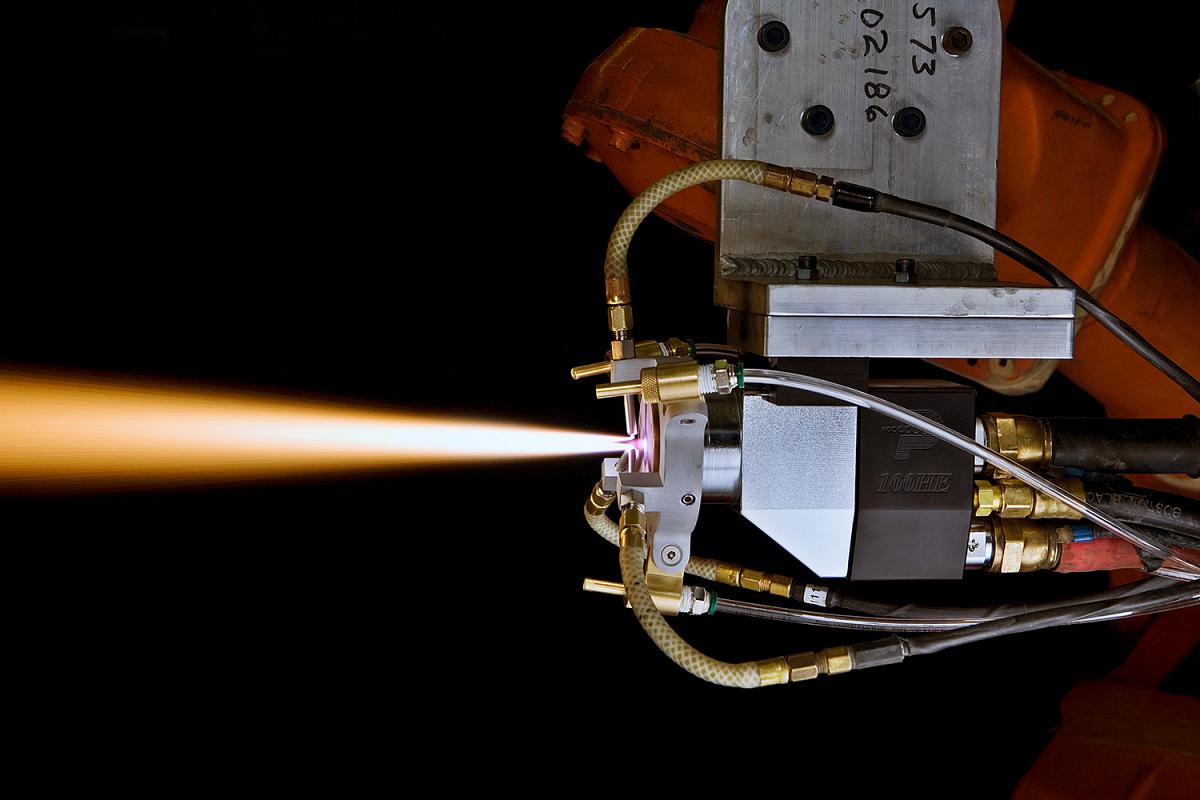
What is a plasma spray system? A plasma spray system is a technology used to coat surfaces with a layer of material, enhancing their durability, resistance, and performance. This system involves creating a plasma jet by heating a gas (like argon) to extremely high temperatures. The material to be coated, often in powder form, is injected into this jet, where it melts and then sprays onto the target surface. This method is widely used in industries such as aerospace, automotive, and medical devices due to its ability to apply coatings that withstand extreme conditions. Plasma spray systems are essential for improving the lifespan and functionality of various components.
What is Plasma Spray System?
Plasma spray systems are used to apply coatings on various materials. These coatings enhance the surface properties of the materials, making them more resistant to wear, corrosion, and high temperatures. Here are some fascinating facts about plasma spray systems.
-
Plasma spray systems use a high-temperature plasma jet to melt coating materials, which are then sprayed onto a surface.
-
The plasma jet can reach temperatures of up to 20,000°C, which is hotter than the surface of the sun.
-
These systems are commonly used in industries like aerospace, automotive, and biomedical.
-
Plasma spray coatings can be made from metals, ceramics, or even plastics.
-
The process can be used to apply coatings to complex shapes and surfaces.
How Plasma Spray Systems Work
Understanding the working mechanism of plasma spray systems can be quite intriguing. The process involves several steps, each crucial for achieving the desired coating quality.
-
A plasma spray system consists of a plasma torch, a power supply, and a material feed system.
-
The plasma torch generates a plasma jet by ionizing a gas, usually argon or nitrogen.
-
The coating material, in powder form, is fed into the plasma jet where it melts.
-
The molten particles are then accelerated towards the substrate, forming a coating upon impact.
-
The substrate is usually preheated to improve the adhesion of the coating.
Applications of Plasma Spray Systems
Plasma spray systems have a wide range of applications due to their versatility and effectiveness. Let's explore some of the key areas where they are used.
-
In the aerospace industry, plasma spray coatings are used to protect turbine blades from high temperatures and corrosion.
-
Automotive parts like engine components and exhaust systems benefit from plasma spray coatings for improved durability.
-
Biomedical implants, such as hip and knee replacements, use plasma spray coatings to enhance biocompatibility and wear resistance.
-
Plasma spray systems are also used in the electronics industry to apply insulating and conductive coatings.
-
The oil and gas industry uses these coatings to protect drilling equipment from harsh environments.
Advantages of Plasma Spray Systems
The benefits of using plasma spray systems are numerous. They offer several advantages that make them a preferred choice for many industrial applications.
-
Plasma spray coatings provide excellent wear and corrosion resistance.
-
The process allows for the application of thick coatings in a single pass.
-
Plasma spray systems can coat large areas quickly and efficiently.
-
The coatings can be tailored to meet specific performance requirements.
-
Plasma spray coatings can improve the thermal and electrical properties of the substrate.
Challenges and Limitations
Despite their many advantages, plasma spray systems also have some challenges and limitations. Understanding these can help in optimizing the process and achieving better results.
-
The initial setup cost for plasma spray systems can be high.
-
The process requires skilled operators to ensure consistent coating quality.
-
Some materials may not be suitable for plasma spraying due to their melting points or chemical properties.
-
The coatings may require post-processing, such as grinding or polishing, to achieve the desired surface finish.
-
Controlling the thickness and uniformity of the coating can be challenging.
Future Trends in Plasma Spray Systems
The field of plasma spray systems is continually evolving, with new advancements and trends emerging. Here are some future trends to watch out for.
-
Development of new coating materials with enhanced properties.
-
Integration of automation and robotics to improve precision and efficiency.
-
Advances in plasma torch technology to achieve higher temperatures and better control.
-
Use of artificial intelligence and machine learning to optimize the coating process and predict performance.
Final Thoughts on Plasma Spray Systems
Plasma spray systems are game-changers in many industries. They provide durable, high-quality coatings that protect surfaces from wear, corrosion, and extreme temperatures. These systems are versatile, used in aerospace, automotive, medical, and electronics fields. They enhance the lifespan of components, saving money and resources in the long run.
Understanding the basics of plasma spray systems helps appreciate their impact. From the creation of protective barriers to improving product performance, these systems are indispensable. The technology continues to evolve, promising even more advanced applications in the future.
Whether you're a professional in the field or just curious, knowing these facts about plasma spray systems gives you a glimpse into their importance. They’re not just tools; they’re innovations that drive progress across various sectors. Keep an eye on this technology—it’s only going to get better.
Was this page helpful?
Our commitment to delivering trustworthy and engaging content is at the heart of what we do. Each fact on our site is contributed by real users like you, bringing a wealth of diverse insights and information. To ensure the highest standards of accuracy and reliability, our dedicated editors meticulously review each submission. This process guarantees that the facts we share are not only fascinating but also credible. Trust in our commitment to quality and authenticity as you explore and learn with us.
